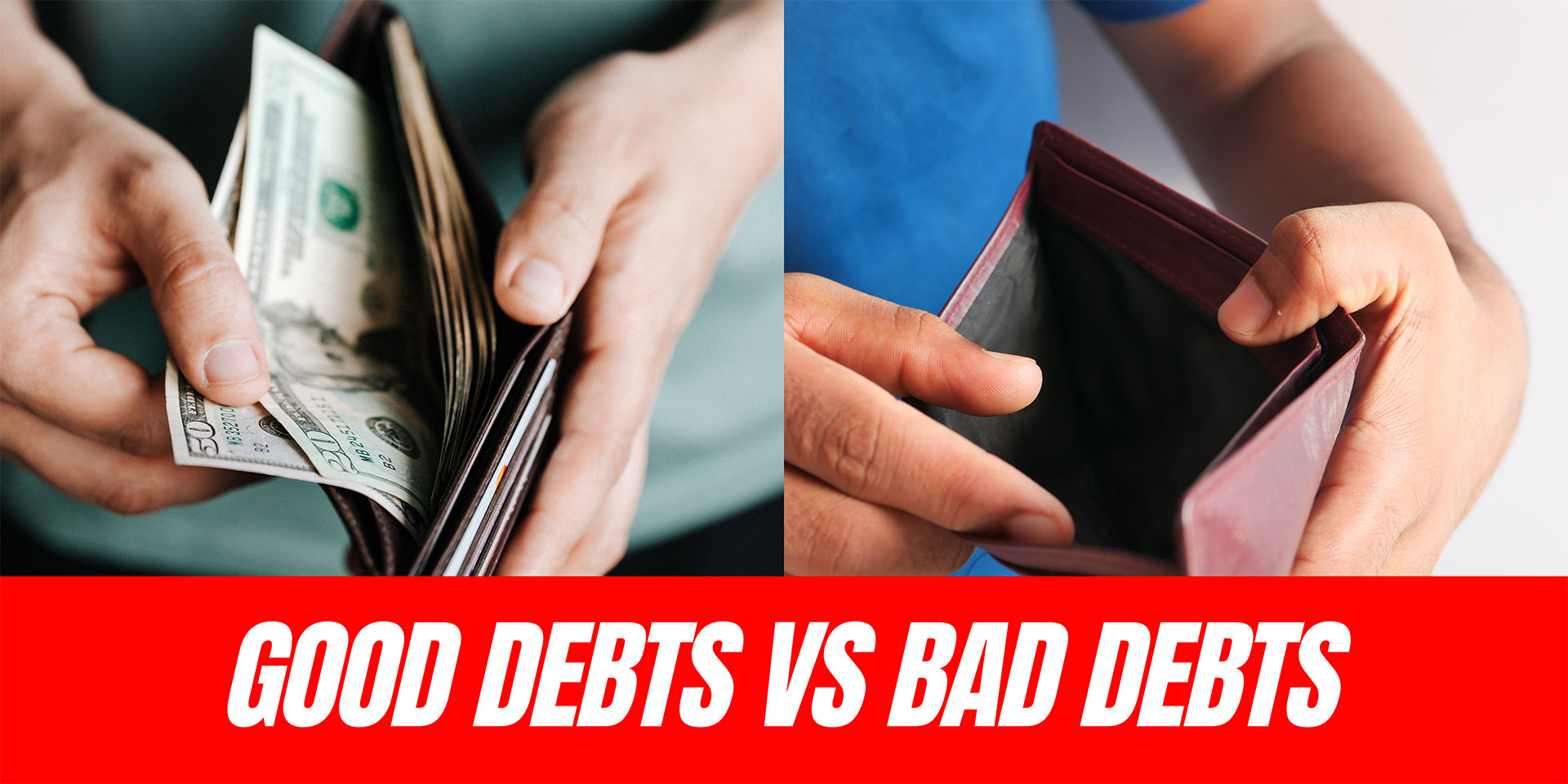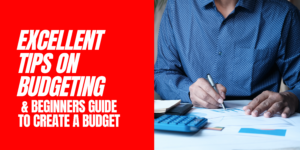


Before you take on any debt, consider if a vehicle loan or a new credit card would help you achieve your financial objectives or make them more difficult to achieve. You take on, together with the amount and expense, which might signify the difference between good debt and bad debt.
There’s a case to be made that having no debt is preferable to having a lot of debt. Many people, however, can only afford to buy critical big-ticket things like a home by borrowing money and taking on debt. While such types of loans are normally reasonable and give value to the borrower, there is another end of the spectrum when debt is taken on irresponsibly. While distinguishing between these two extremes is simple, judging other debts is more difficult.
A credit card, for example, may be quite useful for major purchases and earning reward points. However, if credit card debt with a high interest rate is not carefully handled, it may quickly spiral out of control.
- Good debt has the ability to significantly increase your net worth or improve your quality of life.
- Borrowing money to acquire quickly depreciating assets or simply for consumption is considered bad debt.
- Determining whether a debt is good or bad might depend on a person’s financial status, including how much money they can afford to lose.
Table of Contents
General Guidelines On Good Debt And Bad Debt.
What Is Good Debt?
Any low-interest loan that helps you raise your income or net worth is considered good debt in general. However, too much of any form of debt, regardless of the opportunities it may present, can lead to bad debt.
Medical debt, for example, cannot be classified as either “good” or “bad” debt. The majority of the time, this cost does not carry an interest rate.
Educational Loans
Educational loans offer lower interest rates since they are considered an investment in your future. In general, the higher one’s educational attainment, the higher one’s earning potential. Education also has a favorable impact on one’s capacity to find work. Workers with a higher level of education are more likely to be employed in well-paying positions and have an easier time obtaining new ones if the need arises. Within a few years of joining the job, a college or technical degree may typically pay for itself. However, not all degrees are created equal, so it’s important to think about the short- and long-term implications of any topic of study that interests you.
- Guideline: If you decide to take out a student loan, keep your loan repayments to less than 10% of your estimated after-tax monthly income a year after graduation.
- Take Action : Student debts can be daunting at times; to pay them off, consider personal loans with lower interest rates or other income-driven repayment programs.
Loans For Own Business
Borrowing money to establish your own business falls under the category of good debt. It is typically both financially and psychologically satisfying to be your own employer. It can also be quite taxing. Starting a business, like paying for school, has risks. Many businesses fail, but choosing an area in which you are enthusiastic and competent increases your chances of success.
Home Loans
Home loans are the most important financial choice you will make because they are the only way to become a homeowner. This is at the top of most people’s financial wish lists. This is often seen as a good debt since the loan payback amount is eligible for tax advantages.
There are several methods to profit from real estate. On the residential front, the simplest frequently entails taking out a mortgage to buy a property, living in the home for a few decades and then selling the home for a profit. Meanwhile, you have the independence that comes with owning a house, as well as a variety of possible tax benefits that aren’t accessible to renters. Residential real estate may be rented out to produce income, and commercial real estate can provide cash flow and eventually capital gain provided you know what you’re doing.
- Guideline :Calculate your demands and repayment capacity before taking out a house loan, and keep your EMI payments to 36 percent of your gross income.
- Take action: Housing expenditures can be reduced by downsizing or relocating to a lower-cost location.
Vehicle loans
For the majority of people, having a car has become a necessity in their everyday life. This falls within the category of good debts unless and until the automobile acquired meets the actual demands of each individual while not disrupting the financial equilibrium.
- Guideline: Maintain a total auto expense of less than 20% of your take-home salary, including your automobile loan payment. Loan terms should be four years or less, with a 20% down payment preferred.
- Take action: You may reduce your automobile expenditures by refinancing or trading in an unaffordable/expensive vehicle.
What Is Bad Debt?
Bad debts are high-cost debts that wreak havoc on your finances. Debts with high or variable interest rates, for example, especially when used for items that depreciate in value. If you’re borrowing to buy a depreciating item, it’s usually termed bad debt. To put it another way, you shouldn’t go into debt to acquire something that won’t increase in value or provide revenue.
Bad debts are often simply good debts that have gone bad. A good illustration of this is credit card debt. No problem if you use a high-interest credit card to pay off your debt each month. However, if you accumulate high-interest credit card debt, you will be in serious difficulty.
High-Interest Credit Cards
High interest rates, such as those above 20%, can make paying off your obligations more expensive and challenging.
- Guideline: If your credit card payments keep increasing month after month, even after you’ve paid off everything you can, it’s possible you’re dealing with troublesome credit card debt.
- Take action: If you can keep your spending under control, try the debt snowball strategy, which involves paying off your smaller obligations first. If you have strong credit, a balance transfer credit card might help you pay off your credit card debt faster.
Personal Loans for Non-Responsible Expenses
Taking out personal loans to pay for things like a trip or new clothing may become a costly habit. Garments are commonly mentioned to be worth less than half of what buyers spend for them. If you look around a thrift store, you’ll see that “half” is an exaggeration. Of course, you need clothing items well as food, furniture, and a multitude of other basic essentials borrowing to buy them with a high-interest credit card isn’t a clever use of debt. For convenience, use a credit card, but be sure you can pay off your entire debt at the end of the month to avoid interest costs. Otherwise, attempt to make a cash payment.
- Guideline: Only use personal loans if you have a clear aim in mind, such as paying off another debt.
- Take action: If you have a high-interest personal loan, you might be able to refinance it with a different alternative.
Exceptional Cases To Consider
Debt isn’t always easy to categorize as positive or negative. It is frequently determined by your personal financial status as well as other variables. Certain sorts of debt may be beneficial to certain people while being detrimental to others
A Loan To Cover Off Debt
Taking out a debt consolidation loan from a bank or another reputable lender might be useful for customers who are already in debt. Debt consolidation loans often feature lower interest rates than most credit cards, allowing you to pay off previous obligations while also saving money on interest payments in the future. The trick is to make sure you utilize the money to pay off debts rather than for other purposes. Investopedia presents ratings of the best debt consolidation loans on a regular basis.
A Loan To Invest
If you have a business account, you may be able to open a margin account, which allows you to borrow money from the brokerage to buy assets. Buying on margin, as it’s known, may either earn you money (if the security appreciates value before you have to pay back the loan) or cost you money (if the asset declines in value before you have to pay back the loan) . Inexperienced investors or those who cannot afford to lose money should avoid this type of borrowing.
Conclusion
The form of debt that may be considered an investment, such as a mortgage, college loans, or a car loan, is termed good debt. This loan is taken on to buy something that will appreciate in value or help you improve your financial situation.
On the other hand, bad debt is utilized to buy material goods. Credit card debt and high-interest loans are examples of this. While bad debt may make you comfortable, it does not deliver any amount of return on investment which would put you in a better position financially than before.
Debt is almost tough to avoid for the vast majority of individuals. However, making wise borrowing decisions and understanding the many forms of debt will help guarantee that your debt does not become unmanageable.
Finally, make the greatest use of your debts to increase your assets, and avoid bad debts or deal with them as soon as feasible. This thought process will help you assess if any debt is more troublesome than advantageous, and when you think about it, credit cards can be more beneficial debt than bad debt in some circumstances. For example, if you pay off all of your monthly payments on time and get a lot of cash back or incentives, that’s a win-win situation.




